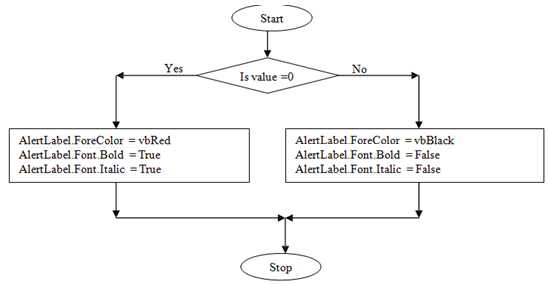To run only one statement while a condition is True, employ the single-line syntax for the If...Then...Else statement. The following instance shows the single-line syntax. Notice that this instance omits the Else keyword.
Sub FixDate() Dim myDate
myDate = #2/13/95#
If myDate < Now Then myDate = Now
End Sub
To run more than one line of code, you have to employ the multiple-line (or block) syntax. This syntax comprises the End If statement, as illustrated in the given example:
Sub AlertUser(value)
If value = 0
Then
AlertLabel.ForeColor = vbRed AlertLabel.Font.Bold = True AlertLabel.Font.Italic = True
End If
End Sub
Running particular Statements if a Condition is True & Running Others if a Condition is False
You can employ an If...Then...Else statement to define two blocks of executable statements: one block to run if the condition is True, the other block to run if condition is False.
Sub AlertUser(value) If value = 0 Then
AlertLabel.ForeColor = vbRed
AlertLabel.Font.Bold = True
AlertLabel.Font.Italic = True
Else
AlertLabel.Forecolor = vbBlack AlertLabel.Font.Bold = False AlertLabel.Font.Italic = False
End If
End Sub
The following flow chart explained the flow of the above example.
